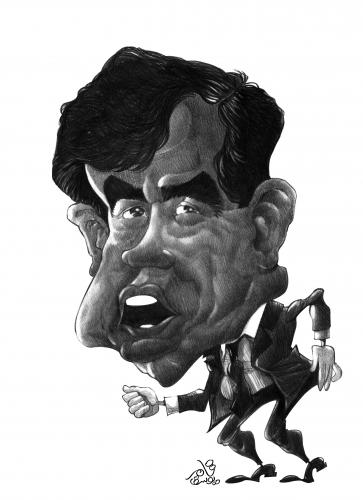 Say what you want about the American Left (or say nothing at all), but they understand the power of language far better than the rest of us seem to.
Say what you want about the American Left (or say nothing at all), but they understand the power of language far better than the rest of us seem to.
At least in New York.
As the budget season approaches, it would behoove New Yorkers to pay closer attention to what’s going on in Albany – particularly what words get used to characterize legislation, tax proposals, campaign finance laws, and budget modifications.
Chances are half of them are misnomers.
In the Empire State, left-wing organizations like the ACORN-inspired Working Families Party (WFP) are masterful with semantics. They control the public debate by subtly – not so subtly in some cases – manipulating language to serve their purposes.
The “Millionaire’s Tax” is one obvious example. The income tax surcharge is levied on couples jointly earning $200,000 per year or more. But the WFP got out in front of the surcharge, successfully pegging it as the Millionaire’s Tax in the news media. They did it so well, in fact, that any other description of the tax surcharge would actually be confusing to readers now, including this one. Which tax are they talking about?
That’s a nice trick.
An even better one:
The WFP, virtually in the same breath, refers to families earning $240,000 – that’s the level of income they think should qualify one for government controlled housing—as “middle class” “working families.”
Check out how the Party breathlessly paints the “affordable housing crisis” on its website:
“The affordable housing crisis in New York City is pushing thousands of working families out of a city they love but can no longer afford.
“Why is it happening? New York City has lost hundreds of thousands of units of affordable housing units through a rent law loophole called “vacancy decontrol.” When a family in a rent stabilized apartment moves out, landlords can often “deregulate” the apartment and charge whatever they want for the next tenants – even double or triple the old rent.
“It means even as the city builds new affordable housing, even more is being lost. If vacancy decontrol isn’t ended soon, middle-class families won’t be able to afford the city they call home.”
The New York Post ran a great editorial in February 2009 exposing the WFP’s hypocrisy on this. Families making $200,000 per year are rich millionaires, but families making $240,000 per year are part of the struggling middle class. Huh? (Please note how vacancy decontrol, a long-considered New York State law, got turned into “a rent law loophole” in the WFP screed.)
“Fair” is another favorite word of the Left. The “rich” are never paying their “fair share” of anything, even though wealthy Americans pay many multiples of their actual share in taxes. (Approximately 47% of Americans paid no federal income tax at all in 2009, according to The Associated Press.)
The WFP is an ardent fan of “fair” and “fairness.” I lost count of how many times those words appear on its website. The pro-union political party has had a couple of iterations of the “Fair Share Tax” and there is bound to be another in 2011.
The slowing of growth in budgets – increasing a budget by, say, 5% a year instead of 7% — has consistently been referred to as “budget cuts”, i.e., [mine] “Our working class kids can’t afford more school budget cuts while the Wall fat cats profit off their destruction of our economy, refusing even to pay their fair share of taxes!” (It must be a gas to write for the WFP.)
Public financing of elections would give us “clean elections” in New York, according to the WFP, even though Empire State elections are driven by union money.
Here’s how they put that:
“Public Financing of elections can kick the big-money crowd out of politics, and finally level the playing field between working families and powerful corporate interests.”
The WFP is the big money crowd. (The American Federation of State, County and Municipal Employees, a WFP linchpin, spent more than $87 million in 2010 to elect Democrats across the country.)
The name “Working Families Party” itself is a linguistic triumph. The Party is a 100% front for New York’s public employee unions. That’s been no secret since day one, if you’ll forgive the expression. Its sole mission is to ensure that as much taxpayer money as possible, earned by – you got it – New York’s working families, be spent by state and local governments on WFP members. All other issues are window-dressing.
Clever use of language is nothing new of course. It’s called propaganda and it’s been brilliantly employed by the Left since at least the Paris Commune (and by the Right for that matter.)
But there is no better practitioner of propaganda in New York State today than the WFP.
They are a talented bunch. Don’t trust anything they say.
 I couldn’t help noticing while walking to my train this morning something I’ve noticed countless times before.
I couldn’t help noticing while walking to my train this morning something I’ve noticed countless times before.






